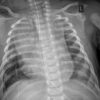Other factors that have classically increased suspicion are winter/early spring presentation in North America, male gender (1.5:1 ratio to females), and Asian (particularly Japanese) ancestry. The importance of genetics was initially based on epidemiology (Japan/Asian risk) but lately has been further associated with six gene polymorphisms. However, molecular genetic testing is not currently a practical tool.
Our index of suspicion can be diluted by nonspecific findings in the week or so before KD blooms, the likelihood that not all necessary KD findings will be present simultaneously in any given patient, and multiple conditions that can present with similar findings. These “confusers” include measles, more common viral infections (adenovirus, enterovirus), toxin-mediated diseases (staphylococcal or group A streptococcal), adverse drug reactions, systemic juvenile idiopathic arthritis or other immune-mediated disease, or exposure-related diagnoses, e.g. Rocky Mountain spotted fever, rickettsial or tick borne infections, or even Leptospirosis. A careful history can be our best diagnostic tool, revealing that one or more principal clinical features were present during the illness but had resolved at presentation strengthening KD suspicion, or that a prior exposure shifts the suspicion away from KD.
Clinical scenarios that also should raise suspicion include less-than-6-month-old infants with prolonged fever/irritability (may be the only clinical manifestations of KD) and children over 4 years old who more often may have incomplete KD. Both groups have higher prevalence of coronary artery abnormalities. Other high suspicion scenarios include prolonged fever with unexplained/culture-negative shock, or antibiotic treatment failure for cervical adenitis or retro/parapharyngeal phlegmon. Consultation with or referral to a regional KD expert may be needed.
Fuzzy KD math
Current guidelines list an exception to the 5-day fever requirement in that only 4 days of fever are needed with four or more principal clinical features, particularly when hand and feet findings exist. Some call this the “4X4 exception.” Then there is a sub-caveat: “Experienced clinicians who have treated many patients with KD may establish the diagnosis with 3 days of fever in rare cases.”1


